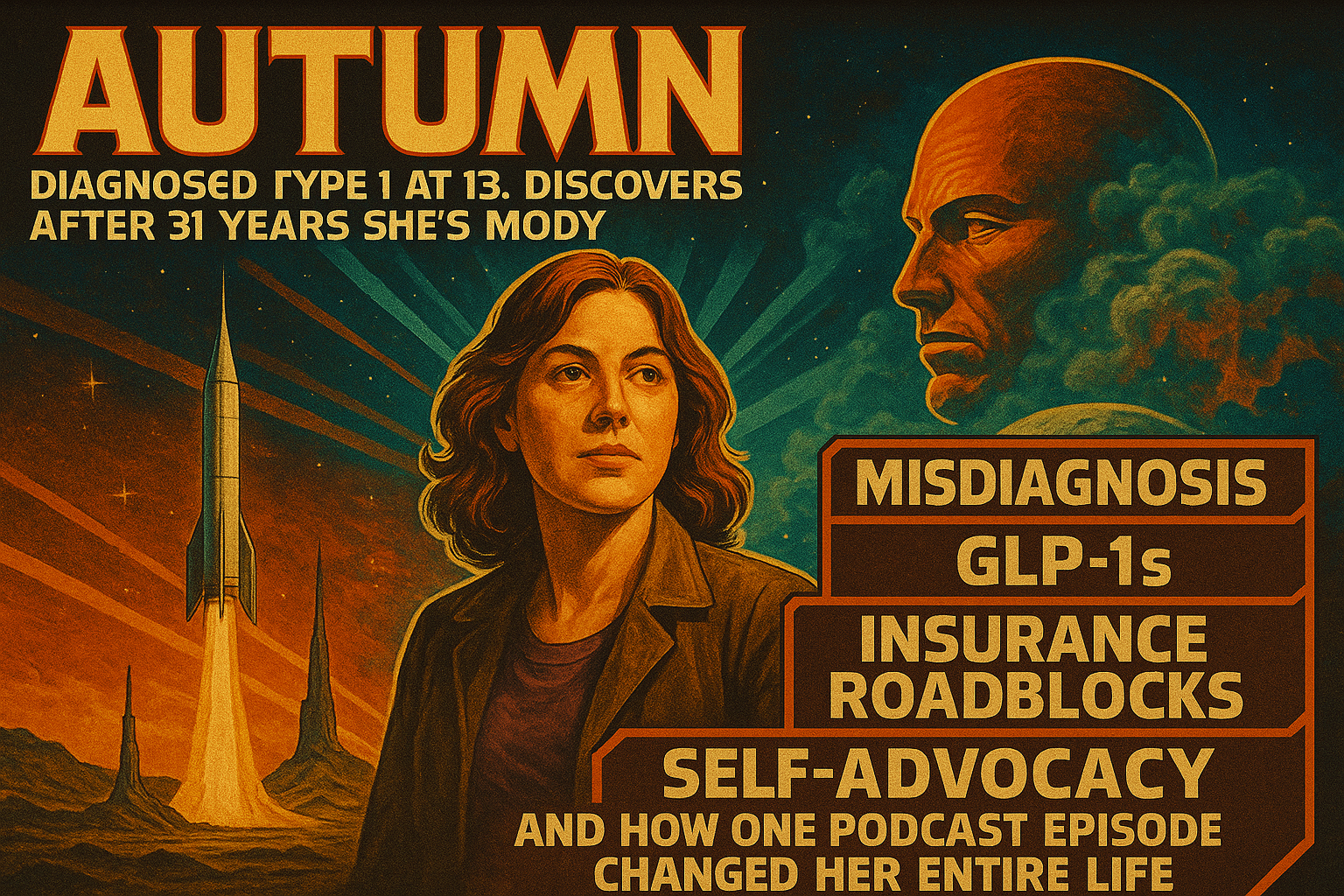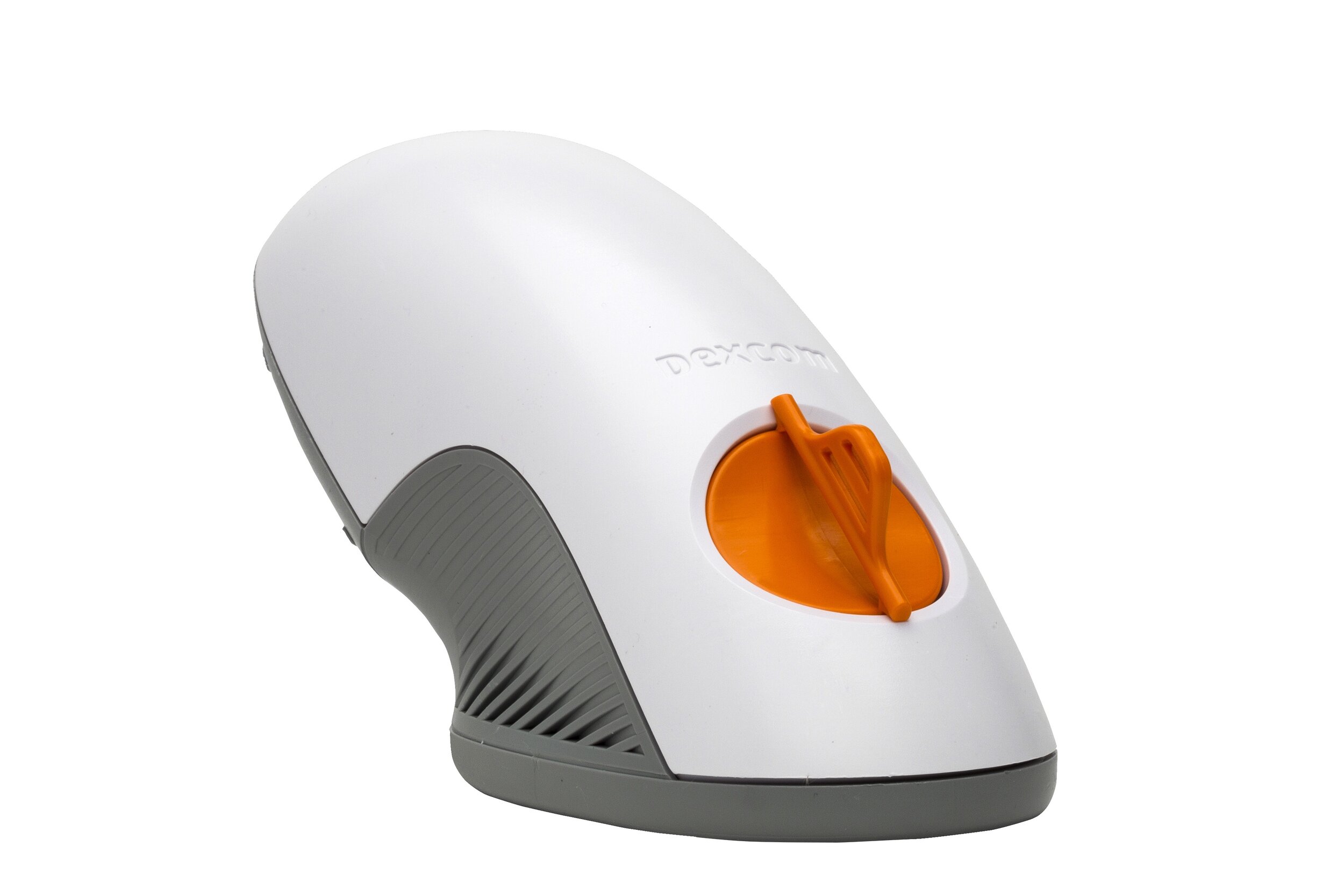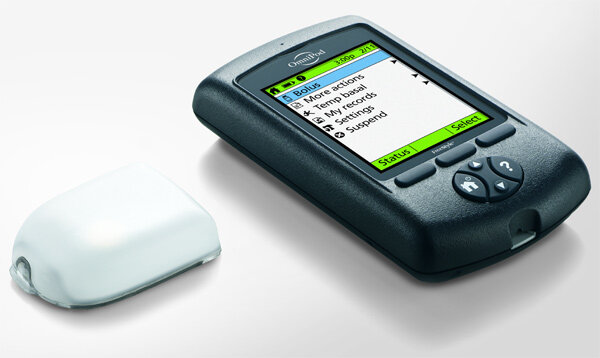New technique efficiently converts human stem cells into insulin-producing cells
Researchers have converted human stem cells into insulin-producing cells and demonstrated in mice infused with such cells that blood sugar levels can be controlled and diabetes functionally cured for nine months.
The findings, from researchers at Washington University School of Medicine in St. Louis, are published online Feb. 24 in the journal Nature Biotechnology.
“These mice had very severe diabetes with blood sugar readings of more than 500 milligrams per deciliter of blood — levels that could be fatal for a person — and when we gave the mice the insulin-secreting cells, within two weeks their blood glucose levels had returned to normal and stayed that way for many months,” said principal investigator Jeffrey R. Millman, PhD, an assistant professor of medicine and of biomedical engineering at Washington University.
Check out the rest of this article here
Listen to Dr. Millman on episode 382 of the Juicebox Podcast
Telemedicine Study
Doximity Study Finds Telemedicine Will Account for $29 Billion in Healthcare Services in 2020
Researchers Also Estimate that 20% of All Medical Office Visits Will Be Virtual this Year
SAN FRANCISCO, Calif. – September 16, 2020– Doximity, the professional medical network, today published its “2020 State of Telemedicine Report,” a comprehensive analysis of telehealth trends in the U.S. since the onset of the COVID-19 pandemic. The report includes a patient survey of over 2,000 U.S. respondents on their attitudes towards telehealth, an analysis of online physician CVs, as well as data from the company’s telemedicine feature set, which is used regularly by over 100,000 U.S. doctors. The study found that 20% of all medical visits will be conducted via telemedicine in 2020, which accounts for more than $29.3 billion of medical services this year alone.
“2020 has brought dramatic changes to the healthcare system, and the transition to telemedicine is one stark example. The pandemic served to spur adoption with doctors and patients alike. And faster than anyone thought possible, moved a significant percentage of medical care online,” explains Peter Alperin, MD and Vice President at Doximity. “We hope our research will help illuminate telemedicine’s evolving role in the medical landscape for national healthcare stakeholders.”
Other Key findings from the study include:
The Pandemic Has Driven Telemedicine Adoption
Since the COVID-19 outbreak, the number of U.S. respondents reporting having at least one telehealth visit has increased by 57%. For those with a chronic illness, this increase is even higher at 77%. Prior to the pandemic, engagement was relatively low, 86% or respondents reporting that they had never done a telehealth visit.
Physicians Reporting ‘Telemedicine’ as a Skill Has Nearly Doubled
Findings from last year’s study showed the number of physicians who self-reported telemedicine as a skill had been increasing by 20% year-over-year for three years. That number has nearly doubled, increasing by 38% between 2019 and 2020.
Female Doctors Are Adopting Telemedicine At Higher Rates
When analyzing physician interest in job opportunities by gender, the data shows that women were 24% more interested in telemedicine jobs relative to men, a significant increase over last year’s data that showed female physicians were engaging with telemedicine job ads at a 10% higher rate than their male colleagues.
"This year alone, over 20% of medical office visits will likely be conducted via telehealth. The combination of shelter-in-place orders, and the need to protect those patients most at-risk from C-19 infection, have created a real necessity to employ alternatives to the traditional in-person office visit,” said Christopher Whaley, Ph.D., lead author and assistant adjunct professor at the University of California, Berkeley School of Public Health. “Moreover, physicians have found telemedicine has served as a vital lifeline for practices negatively impacted financially by the pandemic. In our view, the rapid uptake of telemedicine has important structural implications for the U.S. Healthcare system.”
Click here to download the full 2020 State of Telemedicine report.
About Doximity
Doximity connects physicians and clinicians to make them more successful and productive. It is the largest professional medical network, with over 70 percent of all U.S. physicians as members. The network enables medical professionals to communicate with colleagues and patients and to share their perspectives on the latest health care trends and research. Doximity is based in San Francisco and was created by the founders of Epocrates and Rock Health. To learn more, visit www.doximity.com.
BOOK REVIEW: The Truth According to Blue
Juicebox Podcast Listener review #1
My son is 11 years old and entering 6th grade (also type one diabetic) had these comments. 10 out of 10 stars. Loved the mystery and he was very happy Blue got a CGM at the end. He loved reading about Otis the diabetic alert dog (and is pretty convinced we need one). He really enjoyed the mystery and he was jumping up and down at the end with suspense of what was going to happen.
As an adult reading with my child I thought the book was great, a fun adventure for sure! It put a spotlight on a character that has a chronic illness which you don’t see very often. I also liked how the main character had an everyday life similar to a lot of us. I think it hit all the marks about diabetes from feeling different to accepting your differences and being proud of them. I also liked that the main character, Blue knew how to dive, drive a boat and do all sorts of things that maybe kids with diabetes wouldn’t realize they could do. It had a great parallel with Jules in the book being a “normal” teen and without diabetes she also had challenges in her own life to overcome. I would say it also lent a great message about friendships and accepting people for who they are. I would recommend this book for any middle aged child and even parents too as I was really able to relate to Blue’s parents and how much they worry about her and the ground rules that they had especially around diabetes.
Thank you for the opportunity to review this book. Tracey Vargas
Juicebox Podcast Listener review #2
Reviewers: Jaime (Mom, an elementary school teacher, and T1D) and Natalie (daughter)
Jaime: As an elementary school teacher I know how important it is to have authentic text that children see themselves in. While we have some exceptional multicultural books, I've struggled to find books that include physical disabilities and chronic illnesses. As an avid listener to the Juicebox podcast, I was thrilled to find The Truth According to Blue and for Scott to be asking for reviewers. We jumped and was thrilled to receive the book in the mail a few days later. I let my daughter read the book first. She's a strong reader and will often finish books in one sitting. I wanted to see if this book held her interest, as well as other books, do. To be fair, she isn't a T1D and is going into high school so I knew she would not connect as well to the main character, Blue as others would. However, she still finished the book over the course of a week and seemed to be genuinely interested in it and enjoy the storyline. I'll let her share her thoughts later.
I too enjoyed the book and storyline. The author does a good job of describing the coastal town and the family dynamics that play into how Blue manages her T1D. As a T1D that was diagnosed later in life, I have no connection to the struggles of having parents participating in your diabetic management. I'm also fairly positive that this would be a different experience for every child who has T1D. Regardless, it's still a relatable and realistic portrayal of what one might experience. As a parent, I enjoyed seeing a good relationship presented between Blue and her parents.
Blue's frustration with have type 1 and being seen as the "girl who has diabetes" is extremely relatable to anyone who has T1D. It was nice to read a book that not only included the management but the frustrations as well especially coming from a writer who is not diabetic themselves. The only problem I had with diabetic care in the book was how often Blue went swimming with her pump. I'm sure this is really only noticeable to those of us who know the swimming struggles of wearing a pump. Otherwise, it seemed to be a pretty accurate depiction of a T1D.
The characters became better developed as you got into the book, with Jules becoming more likable and relatable as Blue learned more about her. Both girls are struggling with labels they have been given how they want others to see them. The growth in both characters and the friendship that they develop was enjoyable and realistic to read.
Otis, the diabetic alert dog, is a fun addition and thankfully does not die! I was concerned when Blue was worried about him getting older that he would not survive the book, but he did! As with many stories, the dogs always endear themselves to us and Otis is no different.
With many young adult books, the line between fiction and fantasy is often blurred. The adventures that Blue, Jules, and Otis encounter while searching for treasure is at times unrealistic and dangerous. However, I think without those, it would not be very exciting to read about a T1D with her head in a clear bottom bucket looking for treasure! Even with the problems that the three of them face trying to find treasure, it felt that the T1D information/management could overshadow the story especially if you are not a T1D yourself and know the true effect on one's day to day activities.
Overall, I think many young adult readers would enjoy reading this book regardless if they are a T1D or not. The struggle to find yourself and becoming more independent is universal. Who wouldn't enjoy an adventure story about treasure, two friends, and a really cool dog with a sweet ending?
Natalie:
Everyone enjoys a book with characters who we can relate to and grows throughout the story and this book definitely delivered. Everyone at some point has struggled with who they are and it's great to see those characters in a book; it helps us to see them as more human and not these great characters who we struggle to connect with and see them as distant. As my mother was recently diagnosed I found it really cool to be able to recognize what blue was doing to manage her blood sugar because I’ve seen my mother do what she does. Now as an individual who is not T1D, I did not connect with Blue as much as some with type 1 might, but I still enjoyed seeing her determination and spirit. The way the town was described was lovely, I felt as if I could walk down the street to the Island Bowl and have a good time. I enjoyed following all the characters' relationships improve and even grew to like Jules despite having a bad first impression of her. I do believe that Otis, Blue’s medical alert dog, was my favorite character. I believe that it's always enjoyable when an adorable pup who helps people is one of the main characters. I also liked the fact that once Blue, Jules, and Otis hit a wall they didn’t stop, they kept trying and I enjoy reading about characters who persevere when it seems like they should just stop. By the end despite having had an amazing adventure Jules and Blue found a different kind of treasure, friendship.
New test better predicts which babies will develop type 1 diabetes
from Science Daily, August 7, 2020 - University of Exeter
Scientists at seven international sites have followed 7,798 children at high risk of developing type 1 diabetes from birth, over nine years, in The Environmental Determinants of Diabetes in the Young (TEDDY) Study. The TEDDY Study is a large international study funded primarily by the US National Institutes of Health and U.S. Centers for Disease Control, as well as by the charity JDRF.
In research published in Nature Medicine, scientists at the University of Exeter and the Pacific Northwest Research Institute in Seattle used the TEDDY data to develop a method of combining multiple factors that could influence whether a child is likely to develop type 1 diabetes. The combined risk score approach incorporates genetics, clinical factors such as family history of diabetes, and their count of islet autoantibodies -- biomarkers known to be implicated in type 1 diabetes.
The research team found that the new combined approach dramatically improved prediction of which children would develop type 1 diabetes, potentially allowing better diabetes risk counselling of families. Most importantly, the new approach doubled the efficiency of programmes to screen newborns to prevent the potentially deadly condition of ketoacidosis, a consequence of type 1 diabetes in which insulin deficiency causes the blood to become too acidic. Identifying which children are at highest risk will also benefit clinical trials on drugs that are showing promise in preventing the condition.
Dr Lauric Ferrat at the University of Exeter Medical School, said: "At the moment, 40 per cent of children who are diagnosed with type 1 diabetes have the severe complication of ketoacidosis. For the very young this is life-threatening, resulting in long intensive hospitalizations and in some cases even paralysis or death. Using our new combined approach to identify which babies will develop diabetes can prevent these tragedies, and ensure children are on the right treatment pathway earlier in life, meaning better health."
Professor William Hagopian of the Pacific Northwest Research Institute, said: "We're really excited by these findings. They suggest that the routine heel prick testing of babies done at birth, could go a long way towards preventing early sickness as well as predicting which children will get type 1 diabetes years later. We're now putting this to the test in a trial in Washington State. We hope it will ultimately be used internationally to identify the condition as early as possible, and to power efforts to prevent the disease."
Researchers believe the combined approach can also be rolled out to predict the onset of other diseases with a strong genetic component that are identifiable in childhood, such as celiac disease.
Sanjoy Dutta, JDRF Vice President of Research, said:" We know that while genetics have a strong correlation as a risk factor for family members to develop T1D, most newly diagnosed individuals do not have a known family history. JDRF has been exploring the non-genetic, environmental risk factors that trigger T1D to help develop treatments to forestall or prevent disease onset."
Complete info is available at Science Daily
COVID-19 Patient Assistance Programs
Dexcom Patient Assistance Program for US Patients During the COVID-19 Pandemic
The Dexcom Patient Assistance Program (“Program”) will be available to current U.S. customers who have lost their health insurance coverage as a result of the impact of the COVID-19 pandemic.* The Program will launch in the next several weeks and will be available during the COVID-19 pandemic in the United States. For those existing U.S. customers who qualify for participation in Dexcom’s Program, Dexcom will offer:
Up to two shipments of 90-days of Dexcom continuous glucose monitoring (“CGM”) system supplies, with each shipment consisting of one transmitter and three boxes of three sensors
Reduce patient cost to $45 per 90-day supply shipment
*Patients that are eligible for coverage of their Dexcom CGM systems under a federal or state government program (such as Medicare, Medicaid or VA benefits) are not eligible to participate in this Program. Certain terms and conditions will apply to be eligible for participation in the Program, such as the submission of a complete Program application and documentation showing loss of healthcare benefits.
Learn more at https://www.dexcom.com/covid19-assistance
Omnipod Patient Assistance Program for US Patients During the COVID-19 Pandemic
Omnipod knows the economic downturn will affect many of our current Podders and we want to help them through this challenging time. As a result, we have expanded the benefits of our U.S. financial assistance program for our users who have been negatively impacted by COVID-19. Upon meeting certain financial criteria, a current Podder may receive up to a six-month supply of products free of charge. To learn more about this program, please call us at 1 (800) 591-3455 and select Option 2. A member of our team would be happy to discuss your situation and provide options.
The Omnipod Corona-19 page is at https://www.myomnipod.com/coronavirus
Insulin Support
Novo Nordisk, 1-844-NOVO4ME - https://www.novocare.com/diabetes-overview/let-us-help/pap.html
Lilly, 1-833-808-1234 - https://www.lillycares.com/aboutlillycares.aspx
Sanofi, 1-888-847-4877 - http://www.sanofipatientconnection.com




































